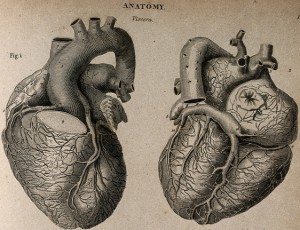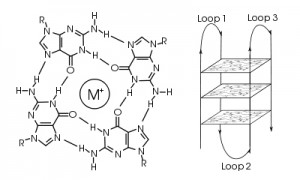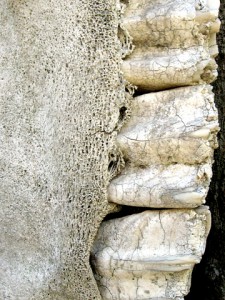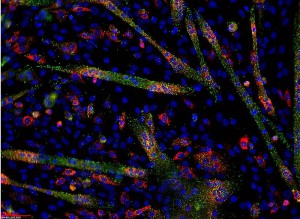 Every day we are bombarded by potential contagions: whether a physical ailment such as measles or influenza or something as seemingly harmless as a yawn or popular Internet meme. For better or worse, emotions can be contagious too, passed on from one person to another through verbal and nonverbal cues, with or without the awareness that we are being affected by another person’s emotional state. In many cases, the only route for such transmission is observation. For example, who hasn’t felt better after watching an uplifting film or cried while watching a sad movie. In the lab, scientists have determined that levels of the stress hormone cortisol increased in individuals undergoing a stress test but also in passive observers who watch the stress test through a one-way mirror or on a television screen. Often, the magnitude of the observer’s response is affected by how well he knows or can relate to the person.
Every day we are bombarded by potential contagions: whether a physical ailment such as measles or influenza or something as seemingly harmless as a yawn or popular Internet meme. For better or worse, emotions can be contagious too, passed on from one person to another through verbal and nonverbal cues, with or without the awareness that we are being affected by another person’s emotional state. In many cases, the only route for such transmission is observation. For example, who hasn’t felt better after watching an uplifting film or cried while watching a sad movie. In the lab, scientists have determined that levels of the stress hormone cortisol increased in individuals undergoing a stress test but also in passive observers who watch the stress test through a one-way mirror or on a television screen. Often, the magnitude of the observer’s response is affected by how well he knows or can relate to the person.
As reported in a recent PLOS ONE article(1), we now know that even a physiological response to cold temperatures is readily transmissible from one person to another, although many of us who live in northern climates probably knew this long before any scientific study: Watching children playing in the snow or someone shoveling snow can often send a chill through us even though we are watching from a heated building. However, a group of scientists in the UK and Germany was not satisfied with anecdotal evidence of temperature contagion, as they named this phenomenon. They did the experiment and generated the data.
Continue reading “A Whole New Meaning to the Phrase “Catching Cold””
Like this:
Like Loading...

 Scientists have known for some time that fetal DNA can be detected in the maternal bloodstream during pregnancy (1). Up to 10% of circulating cell-free-DNA (ccfDNA) can be attributed to the fetus. Fetal ccfDNA is released from the placenta, mainly through apoptosis, and enters the maternal bloodstream, where it can be easily collected and detected by PCR amplification. This method of collection has a much lower risk of miscarriage compared to more invasive collection methods such as
Scientists have known for some time that fetal DNA can be detected in the maternal bloodstream during pregnancy (1). Up to 10% of circulating cell-free-DNA (ccfDNA) can be attributed to the fetus. Fetal ccfDNA is released from the placenta, mainly through apoptosis, and enters the maternal bloodstream, where it can be easily collected and detected by PCR amplification. This method of collection has a much lower risk of miscarriage compared to more invasive collection methods such as 



 Curling up with a good book is one of life’s greatest pleasures, whether you’re reading on a tropical beach while on vacation or nestled into your favorite chair at home. As your eyes skim over the words, your mind conjures up images of the events unfolding on the page. Books can take us to fantastic places, real and imaginary, that we will never visit in our lifetime. And while there is some pleasure to be gained from nonfictional books, my favorite books all seem to fall in the realm of fiction. I am not alone. The science fiction and fantasy genre of literature continues to be one of the most popular. Why do so many readers find these types of books so enticing and engaging?
Curling up with a good book is one of life’s greatest pleasures, whether you’re reading on a tropical beach while on vacation or nestled into your favorite chair at home. As your eyes skim over the words, your mind conjures up images of the events unfolding on the page. Books can take us to fantastic places, real and imaginary, that we will never visit in our lifetime. And while there is some pleasure to be gained from nonfictional books, my favorite books all seem to fall in the realm of fiction. I am not alone. The science fiction and fantasy genre of literature continues to be one of the most popular. Why do so many readers find these types of books so enticing and engaging? Every day we are bombarded by potential contagions: whether a physical ailment such as measles or influenza or something as seemingly harmless as a yawn or popular Internet meme. For better or worse, emotions can be contagious too, passed on from one person to another through verbal and nonverbal cues, with or without the awareness that we are being affected by another person’s emotional state. In many cases, the only route for such transmission is observation. For example, who hasn’t felt better after watching an uplifting film or cried while watching a sad movie. In the lab, scientists have determined that levels of the stress hormone cortisol increased in individuals undergoing a stress test but also in passive observers who watch the stress test through a one-way mirror or on a television screen. Often, the magnitude of the observer’s response is affected by how well he knows or can relate to the person.
Every day we are bombarded by potential contagions: whether a physical ailment such as measles or influenza or something as seemingly harmless as a yawn or popular Internet meme. For better or worse, emotions can be contagious too, passed on from one person to another through verbal and nonverbal cues, with or without the awareness that we are being affected by another person’s emotional state. In many cases, the only route for such transmission is observation. For example, who hasn’t felt better after watching an uplifting film or cried while watching a sad movie. In the lab, scientists have determined that levels of the stress hormone cortisol increased in individuals undergoing a stress test but also in passive observers who watch the stress test through a one-way mirror or on a television screen. Often, the magnitude of the observer’s response is affected by how well he knows or can relate to the person.

